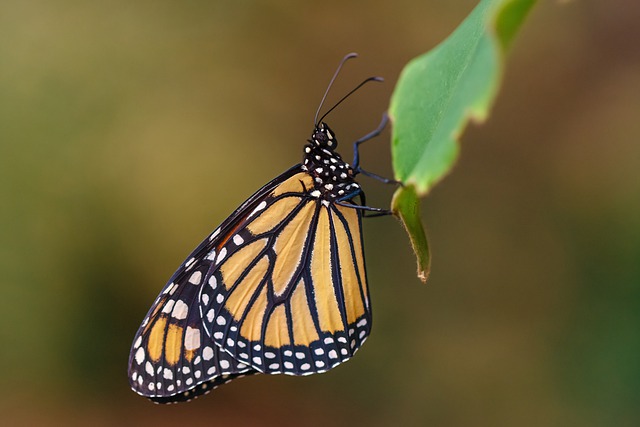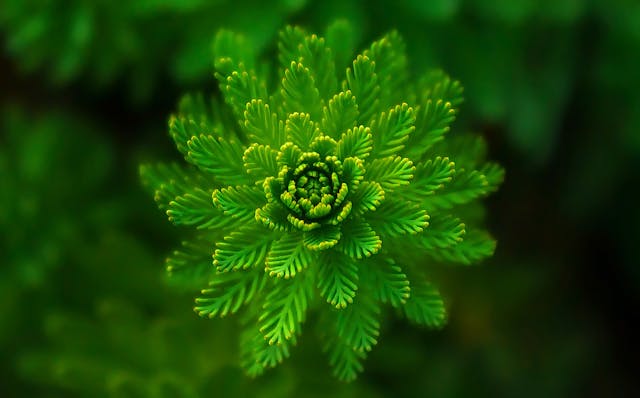Understanding the Monarch Butterfly Protection Efforts is essential as it sheds light on the crucial steps being taken to safeguard this iconic species. The Monarch butterfly has become emblematic of resilience and beauty, yet its population is in serious decline. Alarmingly, recent estimates indicate that western Monarch populations have plummeted over 95% since the 1980s. Various organizations, including the U.S. Fish and Wildlife Service, are vigorously advocating for conservation measures, even proposing to list the Monarch as threatened under the Endangered Species Act. It’s clear that comprehensive Monarch Butterfly Protection Efforts require a collaborative approach, uniting governmental initiatives and grassroots movements to drive effective change.
Moreover, the urgency of these Monarch Butterfly Protection Efforts cannot be overstated. Environmental challenges such as habitat loss, the overuse of pesticides, and climate change are major culprits in the Monarch’s decline. According to projections, if these trends persist, there’s a projected 99% chance of extinction for this species by 2080. This sobering reality highlights the need for all of us to participate in these protection endeavors. From planting milkweed in our gardens to supporting local conservation programs, everyone can play a vital role in ensuring that the beauty and richness of the Monarch butterfly continue to thrive for generations to come.
Table of Contents
- The Urgent Need for Monarch Butterfly Protection Efforts
- Key Initiatives in Monarch Butterfly Protection Efforts
- International Scope of Monarch Butterfly Protection Efforts
- Environmental Threats Impacting Monarch Butterfly Protection Efforts
- Community Involvement in Monarch Butterfly Protection Efforts
- Success Stories and Achievements in Monarch Butterfly Protection Efforts
- Future Directions for Monarch Butterfly Protection Efforts
We also Published
“The mind is everything. What you think you become.” – Buddha
Understanding the Monarch Butterfly Protection Efforts
The Monarch butterfly, a symbol of resilience and beauty, has become a focal point for conservation efforts due to its alarming population decline. This section will delve into the fundamental aspects of the Monarch Butterfly Protection Efforts, highlighting the roles various organizations and governments play in supporting this initiative. The U.S. Fish and Wildlife Service’s proposal to list the Monarch butterfly as threatened under the Endangered Species Act marks a crucial step towards ensuring its survival. Public engagement is key, as stakeholder involvement will be necessary for the success of these protection efforts.
The Urgent Need for Monarch Butterfly Protection Efforts
The Monarch butterfly population has faced a staggering decline over the last few decades, with estimates indicating a drop of over 95% in western populations since the 1980s. Environmental changes, habitat loss, and pesticide use are major contributors to this crisis. With a projected 99% chance of extinction by 2080 if current trends continue, the need for immediate action through Monarch Butterfly Protection Efforts is more urgent than ever. This section emphasizes the gravity of the situation, urging stakeholders and the public to recognize the importance of conservation measures.
Key Initiatives in Monarch Butterfly Protection Efforts
Several innovative initiatives are paving the way for effective Monarch Butterfly Protection Efforts. The National Fish and Wildlife Foundation recently introduced a $5.2 million grant program aimed at restoring habitats vital for Monarchs and other pollinators. Specific actions include the restoration of over 26,000 acres of crucial pollinator habitat, collecting milkweed seeds, and propagating milkweed seedlings. These initiatives are instrumental in the conservation efforts, as milkweed serves as the only food source for Monarch caterpillars, thereby ensuring population recovery.
International Scope of Monarch Butterfly Protection Efforts
Conservation strategies for the Monarch butterfly extend beyond U.S. borders, reflecting its migratory nature and international significance. Canada has recognized the Monarch as endangered under the Species at Risk Act, while Mexico has taken measures to protect the species within the Monarch Butterfly Biosphere Reserve. The International Union for Conservation of Nature (IUCN) has also classified the migratory Monarch as vulnerable, drawing attention to the necessity of global cooperation. This section explores the collaborative efforts across nations to safeguard Monarchs and ensure their habitat is preserved for future generations.
Environmental Threats Impacting Monarch Butterfly Protection Efforts
Various environmental threats pose challenges to effective Monarch Butterfly Protection Efforts. Key issues include habitat loss primarily due to illegal logging, agricultural insecticides, and the impacts of climate change. These factors disrupt the crucial breeding and migratory patterns of the Monarch butterfly, diminishing the availability of necessary resources. By understanding these threats, conservationists can better strategize protection and restoration efforts needed to help revive this iconic species.
Community Involvement in Monarch Butterfly Protection Efforts
Community involvement plays a pivotal role in the success of Monarch Butterfly Protection Efforts. The U.S. Fish and Wildlife Service advocates for public engagement, encouraging local communities to participate in conservation activities. Individuals can make a difference through simple actions, such as planting milkweed, creating butterfly gardens, and supporting local conservation programs. This section discusses the impact of grassroots movements and the power of community awareness in promoting recovery efforts for the Monarch butterfly.
Success Stories and Achievements in Monarch Butterfly Protection Efforts
Despite the challenges faced, there have been significant achievements in Monarch Butterfly Protection Efforts. Success stories highlight effective habitat restoration projects, active community engagement, and the development of educational campaigns that raise awareness about the plight of Monarchs. These successes not only inspire further participation but also drive additional funding and resources for conservation initiatives. This section showcases impactful achievements that can serve as a blueprint for future efforts.
Future Directions for Monarch Butterfly Protection Efforts
Looking ahead, the future of Monarch Butterfly Protection Efforts lies in integrating science, community engagement, and international collaboration. Addressing the ongoing threats posed by climate change, habitat loss, and pesticide usage will be paramount. Additionally, expanding educational outreach and enhancing policy frameworks will ensure a robust recovery plan. This section proposes actionable steps and strategic directions to safeguard the Monarch butterfly, emphasizing the importance of sustained efforts to protect this cherished species.
| Section | Summary | Key Initiatives |
|---|---|---|
| The Urgent Need for Protection | The Monarch butterfly has experienced a 95% decline since the 1980s due to habitat loss and pesticides, with a projected 99% extinction chance by 2080. | Public engagement is crucial for conservation success. |
| Key Initiatives | $5.2 million grant program by the National Fish and Wildlife Foundation aims to restore 26,000 acres of habitat, essential for Monarchs. | Actions include collecting milkweed seeds and propagating seedlings. |
| International Scope | Conservation efforts involve Canada and Mexico, highlighting the migratory nature of Monarchs. | Global cooperation is necessary for protection. |
| Environmental Threats | Key threats include habitat loss, climate change, and agricultural insecticides disrupting Monarchs’ breeding and migration. | Understanding threats aids in strategizing restoration efforts. |
| Community Involvement | Public engagement through local activities can support conservation efforts. | Actions like planting milkweed and creating butterfly gardens can make a difference. |
| Success Stories | Significant achievements include habitat restoration, community engagement, and educational campaigns increasing awareness. | These successes inspire additional funding for conservation initiatives. |
| Future Directions | Future efforts will focus on science-driven strategies and community collaboration to address ongoing threats. | Proposed actions include enhancing policies and expanding educational outreach. |
The critical need for Monarch Butterfly Protection Efforts becomes evident as we examine the remarkable yet fragile existence of these butterflies. Not only are they a beautiful part of our ecosystem, but they also play a vital role in pollination, contributing to the health of our environment. The alarming statistics about their population decline illustrate that comprehensive strategies are essential for their survival. It is heartening to see various organizations, governments, and communities coming together to forge impactful initiatives aimed at preserving this species.
As students and future leaders, it is imperative to engage with the ongoing Monarch Butterfly Protection Efforts. By understanding the various environmental threats and success stories, you can become a proactive participant in conservation efforts. Even small actions, like creating butterfly-friendly habitats or advocating for environmentally-sound policies, can make a significant difference. Engaging in these efforts not only aids the Monarch butterfly but enhances your knowledge and commitment to environmental stewardship.
- Get involved with local conservation programs and campaigns aimed at protecting butterfly habitats.
- Educate yourself and others about the importance of the Monarch butterfly in our ecosystems.
- Consider participating in community initiatives that focus on habitat restoration and awareness.
- Support legislation that contributes to the strength of Monarch Butterfly Protection Efforts on a larger scale.
- Support legislation that contributes to the strength of Monarch Butterfly Protection Efforts on a larger scale.
In closing, the collective actions we take towards strengthening Monarch Butterfly Protection Efforts are crucial for the survival of this extraordinary species. The time is now to act, and every effort counts in ensuring the Monarch butterfly not only survives but thrives.
We also Published
RESOURCES
- Monarch Butterfly: Endangered Species Facts, Info & More
- Monarchs in Decline
- Monarch Resources
- Save the monarch | U.S. Fish & Wildlife Service
- Migratory monarch butterflies officially declared …
- How we can protect monarch butterflies
- Monarch Butterfly Conservation
- Nation-Wide Actions to Safeguard Monarch Butterflies
- IUCN Changes Migratory Monarch Status from…
- Monarch Butterflies Are Endangered. Here’s How You Can Make a Difference …
- The Monarch Emergency – 2021 FAQ








0 Comments